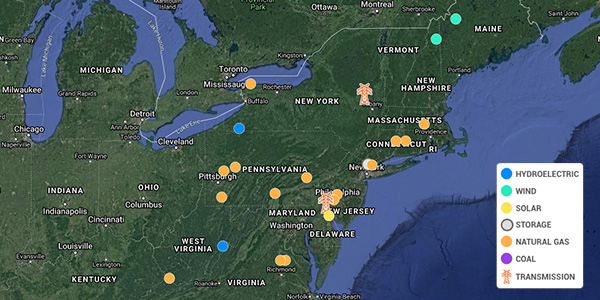EDITOR’s NOTE: Independent power producer and transmission developer LS Power, which operates 29 power generation facilities totaling 14,000 MW, has been an aggressive competitor for Order 1000 transmission projects. Marji Philips, LS Power’s vice president of wholesale market policy, is a fixture at PJM stakeholder meetings and a tenacious advocate for the company. But the COVID-19 crisis has it and its competitors working together, Philips says. Here is her account of a week that was.
By Marji Philips
A remarkable thing happened recently that merits a shoutout. The independent power producers in the Eastern RTOs set aside competitive differences and came together as a collective to protect our communities. Alongside other generation owners, we dedicated all of our resources to ensure our power plants will remain online during the COVID-19 coronavirus pandemic. Unfortunately, this is probably only the beginning, and not the end, of what will require long-term and sustained efforts to ensure the lights stay on during this crisis. Fortunately, the amount of cooperation we experienced with our local and state officials augurs well for the future.
There are some lessons learned already. It was not that long ago that the RTOs were required to outline their resilience plans for FERC. As part of that, we debated what resilience meant and viewed it as low-probability, high-impact events, with the concern that the RTOs were too focused on natural gas pipelines disruptions. We had been through Hurricane Katrina, saw what happened in Puerto Rico with Hurricane Maria and declared ourselves basically ready for a disaster, but as events unfolded, we found that we as an industry were not as prepared as we could have been. While initially slow to organize community discussions and reach out to local and state governments, RTOs quickly adapted to a more proactive stance to support us in getting our needs identified and addressed.
This came to a head on the weekend of March 21, when the Electricity Subsector Coordinating Council (ESCC) announced it was shifting into high gear to deal with the pandemic. Our national association, the Electric Power Supply Association, started working with all the other industry associations through the ESCC at the federal level.
Not surprisingly, the primary concern was ensuring the ongoing safety of our workers and their ability to get to our power plants. This will require access to priority testing despite short supply and waivers regarding any transportation limitations. We grappled with communication challenges, as conference call networks were initially overwhelmed by the volume created by the widespread shift to remote operations. We had to identify and address all related issues. This included ensuring equipment, services and products (e.g. chemicals) could get to our plants, and that those suppliers also had testing and transportation available, in addition to our plant employees. Further, it became apparent that we would need to ensure that hotels remained open so we could house our workers, although contingencies were also made to allow for on-site work and shelter-in-place if need be. Thanks to the expediency and effectiveness of our regional associations — the PJM Power Providers (P3 Group), the New England Power Generators Association (NEPGA) and the Independent Power Producers of New York (IPPNY), as well as all of the dedicated state personnel responding to the crisis — none of the state lockdowns issued thus far has prevented us from keeping our power plants running.
So, what’s in the future? We are working to further refine our shift work so our employees stay healthy. We remain focused on continued access to ongoing supplies for a sustained duration. There is concern that supplies may be interrupted, which may require emissions permits to be temporarily exceeded in order to keep some plants online; the need to keep the lights on in our hospitals and home will require temporary tradeoffs. It also may be necessary to defer generation and transmission maintenance. The challenge will be to determine how long that maintenance can be deferred, especially if we have a hot summer. We will have to understand the market impacts of changes in transmission and generation outage scheduling. We will have to forecast the expected impacts of the shelter-in-place restrictions on our economy. On top of all this, we need to get back to work. In PJM, we have to get the capacity market running again. In ISO-NE, we need to get the Energy Security Initiative moving. And in NYISO, we need to address market power mitigation and carbon issues. Hopefully, in the near future we will return to the “new normal,” and all the hours we now have at home will enable us to successfully engage FERC to help keep the RTO electric markets operational and efficient. In the meantime, I’d like to extend LS Power’s appreciation for the hard work of our employees, partners and industry colleagues in these challenging times.






